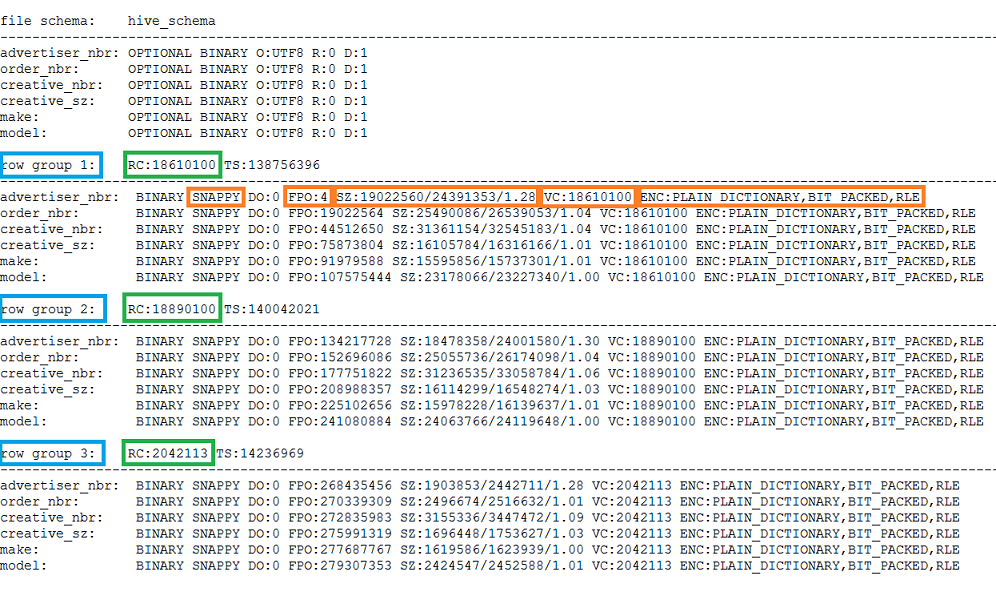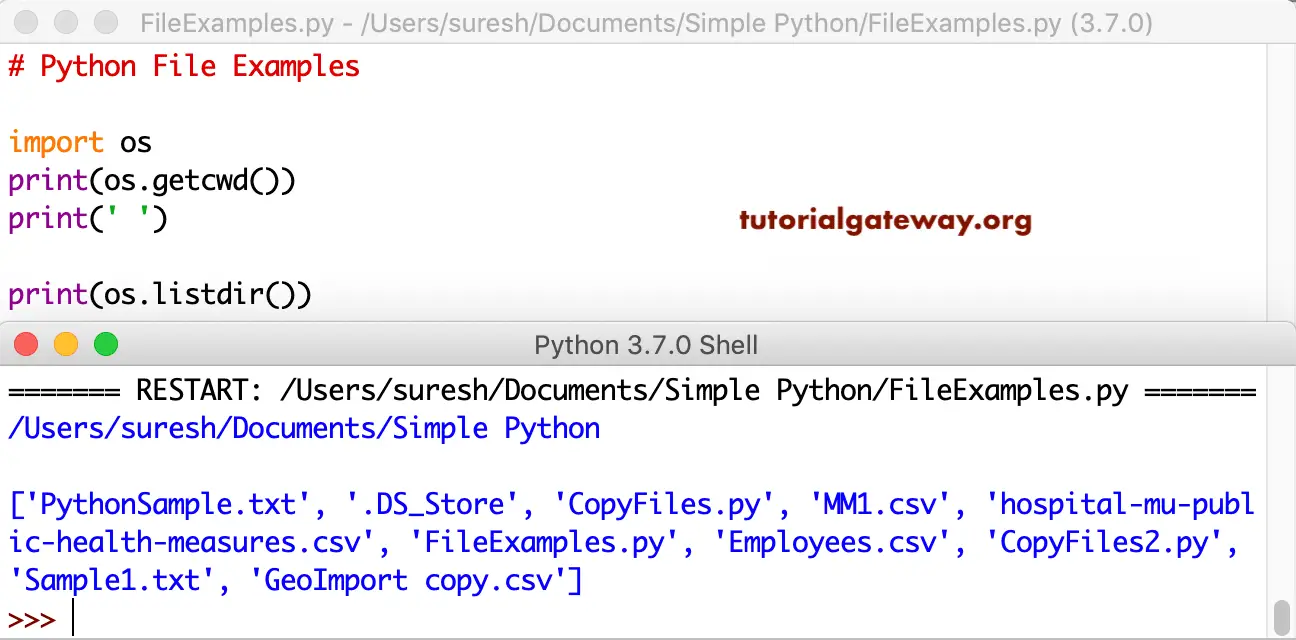Read Large Parquet File Python
Read Large Parquet File Python - Pickle, feather, parquet, and hdf5. Web the parquet file is quite large (6m rows). See the user guide for more details. The task is, to upload about 120,000 of parquet files which is total of 20gb size in overall. I'm using dask and batch load concept to do parallelism. If you have python installed, then you’ll see the version number displayed below the command. Columnslist, default=none if not none, only these columns will be read from the file. This article explores four alternatives to the csv file format for handling large datasets: Web the general approach to achieve interactive speeds when querying large parquet files is to: In our scenario, we can translate.
This function writes the dataframe as a parquet file. Below is the script that works but too slow. Import pandas as pd df = pd.read_parquet('path/to/the/parquet/files/directory') it concats everything into a single dataframe so you can convert it to a csv right after: It is also making three sizes of. This article explores four alternatives to the csv file format for handling large datasets: Retrieve data from a database, convert it to a dataframe, and use each one of these libraries to write records to a parquet file. Web the parquet file is quite large (6m rows). Web pd.read_parquet (chunks_*, engine=fastparquet) or if you want to read specific chunks you can try: Web the default io.parquet.engine behavior is to try ‘pyarrow’, falling back to ‘fastparquet’ if ‘pyarrow’ is unavailable. Web read streaming batches from a parquet file.
If not none, only these columns will be read from the file. Batches may be smaller if there aren’t enough rows in the file. Web the parquet file is quite large (6m rows). If you have python installed, then you’ll see the version number displayed below the command. Only read the columns required for your analysis; Reading parquet and memory mapping ¶ because parquet data needs to be decoded from the parquet. Web in this article, i will demonstrate how to write data to parquet files in python using four different libraries: My memory do not support default reading with fastparquet in python, so i do not know what i should do to lower the memory usage of the reading. Retrieve data from a database, convert it to a dataframe, and use each one of these libraries to write records to a parquet file. Import pandas as pd df = pd.read_parquet('path/to/the/parquet/files/directory') it concats everything into a single dataframe so you can convert it to a csv right after:
Big Data Made Easy Parquet tools utility
Web the default io.parquet.engine behavior is to try ‘pyarrow’, falling back to ‘fastparquet’ if ‘pyarrow’ is unavailable. I have also installed the pyarrow and fastparquet libraries which the read_parquet. Only read the rows required for your analysis; Import dask.dataframe as dd from dask import delayed from fastparquet import parquetfile import glob files = glob.glob('data/*.parquet') @delayed def. Web in this article,.
Python File Handling
I have also installed the pyarrow and fastparquet libraries which the read_parquet. Spark sql provides support for both reading and writing parquet files that automatically preserves the schema of the original data. You can choose different parquet backends, and have the option of compression. Web meta is releasing two versions of code llama, one geared toward producing python code and.
kn_example_python_read_parquet_file_2021 — NodePit
I realized that files = ['file1.parq', 'file2.parq',.] ddf = dd.read_parquet(files,. Web the default io.parquet.engine behavior is to try ‘pyarrow’, falling back to ‘fastparquet’ if ‘pyarrow’ is unavailable. So read it using dask. Web i encountered a problem with runtime from my code. Web the general approach to achieve interactive speeds when querying large parquet files is to:
python Using Pyarrow to read parquet files written by Spark increases
Web import pandas as pd #import the pandas library parquet_file = 'location\to\file\example_pa.parquet' pd.read_parquet (parquet_file, engine='pyarrow') this is what the output. Web below you can see an output of the script that shows memory usage. This function writes the dataframe as a parquet file. Pickle, feather, parquet, and hdf5. I have also installed the pyarrow and fastparquet libraries which the read_parquet.
python How to read parquet files directly from azure datalake without
Web pd.read_parquet (chunks_*, engine=fastparquet) or if you want to read specific chunks you can try: Web so you can read multiple parquet files like this: Only read the rows required for your analysis; I have also installed the pyarrow and fastparquet libraries which the read_parquet. In particular, you will learn how to:
Understand predicate pushdown on row group level in Parquet with
In particular, you will learn how to: Web how to read a 30g parquet file by python ask question asked 1 year, 11 months ago modified 1 year, 11 months ago viewed 530 times 1 i am trying to read data from a large parquet file of 30g. Web the general approach to achieve interactive speeds when querying large parquet.
Parquet, will it Alteryx? Alteryx Community
Web in this article, i will demonstrate how to write data to parquet files in python using four different libraries: Import pandas as pd df = pd.read_parquet('path/to/the/parquet/files/directory') it concats everything into a single dataframe so you can convert it to a csv right after: It is also making three sizes of. Import pyarrow as pa import pyarrow.parquet as. Web meta.
How to Read PDF or specific Page of a PDF file using Python Code by
Only these row groups will be read from the file. Web in this article, i will demonstrate how to write data to parquet files in python using four different libraries: Import pyarrow.parquet as pq pq_file = pq.parquetfile(filename.parquet) n_groups = pq_file.num_row_groups for grp_idx in range(n_groups): Web the default io.parquet.engine behavior is to try ‘pyarrow’, falling back to ‘fastparquet’ if ‘pyarrow’ is.
How to resolve Parquet File issue
Reading parquet and memory mapping ¶ because parquet data needs to be decoded from the parquet. If you have python installed, then you’ll see the version number displayed below the command. Web configuration parquet is a columnar format that is supported by many other data processing systems. This article explores four alternatives to the csv file format for handling large.
Python Read A File Line By Line Example Python Guides
Web configuration parquet is a columnar format that is supported by many other data processing systems. You can choose different parquet backends, and have the option of compression. In particular, you will learn how to: Web i encountered a problem with runtime from my code. Web i am trying to read a decently large parquet file (~2 gb with about.
It Is Also Making Three Sizes Of.
Web the general approach to achieve interactive speeds when querying large parquet files is to: Web below you can see an output of the script that shows memory usage. Import pyarrow as pa import pyarrow.parquet as. In particular, you will learn how to:
Batches May Be Smaller If There Aren’t Enough Rows In The File.
Only read the columns required for your analysis; Web i am trying to read a decently large parquet file (~2 gb with about ~30 million rows) into my jupyter notebook (in python 3) using the pandas read_parquet function. Below is the script that works but too slow. Reading parquet and memory mapping ¶ because parquet data needs to be decoded from the parquet.
Web Read Streaming Batches From A Parquet File.
Web in general, a python file object will have the worst read performance, while a string file path or an instance of nativefile (especially memory maps) will perform the best. Web i'm reading a larger number (100s to 1000s) of parquet files into a single dask dataframe (single machine, all local). Web write a dataframe to the binary parquet format. Web in this article, i will demonstrate how to write data to parquet files in python using four different libraries:
Import Dask.dataframe As Dd From Dask Import Delayed From Fastparquet Import Parquetfile Import Glob Files = Glob.glob('Data/*.Parquet') @Delayed Def.
Web parquet files are always large. Import pyarrow.parquet as pq pq_file = pq.parquetfile(filename.parquet) n_groups = pq_file.num_row_groups for grp_idx in range(n_groups): This function writes the dataframe as a parquet file. You can choose different parquet backends, and have the option of compression.








